Planning a 3-day Cantabria itinerary might seem challenging at first, but with the right route you can experience the best of northern Spain — rolling green landscapes, charming villages, wild beaches and a rich gastronomy that delights every traveler. In this guide, you’ll find a carefully designed itinerary to make the most of a short getaway, combining sea, mountains and culture in a truly authentic Cantabrian experience.
Cantabria, bathed by the Cantabrian Sea and framed by mountains that rise like green giants, hides natural and historical treasures of immense beauty. From golden beaches and prehistoric caves to fishing villages full of life and tradition, every corner of this region invites you to slow down and simply enjoy.
And if you’re still wondering where to go, follow our step-by-step 3-day Cantabria itinerary and discover the most beautiful places, unique experiences and Glutendtrotter tips to make your trip unforgettable.
Day 1: Santander — The Perfect Starting Point for Your 3-Day Cantabria Itinerary
Manuel and I always joke that Santander is the second most beautiful city in the world — we just haven’t found the first one yet. Maybe it’s because this seaside city has truly stolen our hearts with its elegance, stunning bay and peaceful rhythm by the sea.
If you’re planning a 3-day Cantabria itinerary, there’s no better way to start than by spending your first day exploring the capital. Santander is a walkable, sunlit city filled with charm, culture and breathtaking coastal scenery.
During this first day, you’ll visit some of the city’s most iconic landmarks — from the Cabo Mayor Lighthouse to the Centro Botín — blending nature, history and art along what many call the most beautiful bay in Spain.
To kick off your trip the right way, we recommend joining this walking tour, where a local guide will show you the most fascinating corners and stories of our beloved city.
1. Cabo Mayor Lighthouse and Costa Quebrada: The Start of a Scenic Route
This historic lighthouse, surrounded by dramatic cliffs, offers breathtaking panoramic views of the Cantabrian coastline and hosts a small art exhibition dedicated to the maritime world. From here begins one of the most beautiful routes in the region — the Costa Quebrada, a spectacular coastal path that connects some of Cantabria’s wildest and most photogenic landscapes.
Cabo Mayor also marks the entrance to Santander’s most iconic area: El Sardinero, where elegant beaches, seaside promenades and the rhythm of the waves capture the city’s authentic charm.
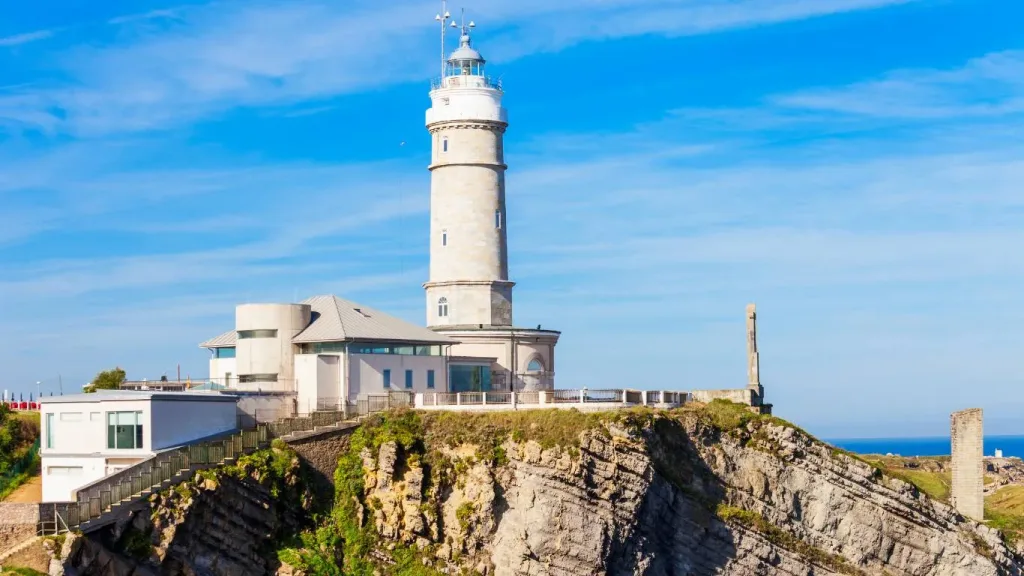
2. Mataleñas Beach: A Swim and Breakfast with a View
Descending from the lighthouse, you’ll find a hidden cove nestled between cliffs — Mataleñas Beach, a peaceful spot perfect for those seeking a quieter escape. If the weather is kind, take a refreshing swim in its turquoise waters and then enjoy breakfast with a sea view at the nearby Hotel Chiqui. It’s the perfect way to start the day surrounded by Cantabria’s natural beauty.
3. El Sardinero and the Piquío Gardens: The Seafaring Soul of Santander
El Sardinero is Santander’s most famous beach — a wide golden stretch of sand divided by the Piquío Gardens, where every angle looks like a postcard. From here you can spot Mouro Island, the Magdalena Peninsula, and the elegant Hotel Real, icons of the city’s coastline.
This area is also perfect for tasting local gastronomy at one of the seaside restaurants, where you can enjoy fresh seafood with unbeatable views of the bay.
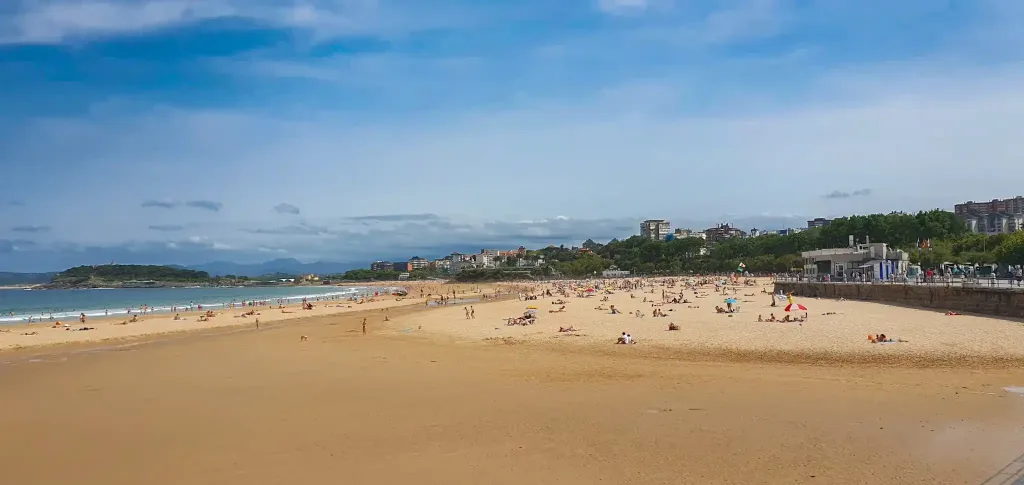
4. Magdalena Palace: History, Views and a Royal Walk
Once the summer residence of the Spanish royal family, the Magdalena Palace is now one of Santander’s most iconic landmarks. Surrounded by beautifully landscaped gardens, it offers sweeping views over the bay and a glimpse into the city’s aristocratic past.
You can stroll through its grounds, visit the Man and the Sea Museum, or hop on the little tourist train known as the “Magdaleno”, a charming way to enjoy the ride while taking in the palace’s royal atmosphere and the spectacular views of the Cantabrian Sea.
📍 We recommend joining this guided tour of the Magdalena Palace and its park to learn about its history, legends and royal summer retreats while enjoying some of the best views in Santander.
5. Puertochico and the Waterfront Promenade: Local Flavor and Picture-Perfect Views
The Puertochico area blends Santander’s seafaring tradition with a lively modern atmosphere. Once a small fishing port, today it’s filled with cafés, terraces and restaurants where locals gather to enjoy the best seafood and a relaxed evening by the water.
A stroll along the Waterfront Promenade reveals some of the city’s most charming sights — from the Zaera Dune and the Embarcadero Pavilion to the bronze sculptures of “Los Raqueros”, immortalizing the young boys who once dove into the bay for coins. It’s one of the most photographed corners of Santander and a must on any visit to the city.
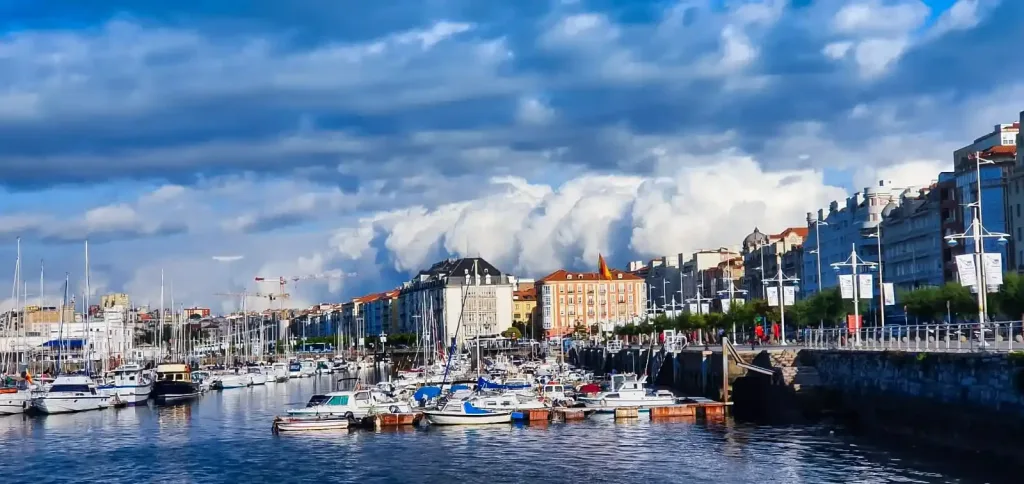
6. Centro Botín: Modern Art Overlooking the Bay
Designed by the renowned Italian architect Renzo Piano, the Centro Botín has become one of Santander’s most distinctive landmarks. This contemporary art center combines bold architecture with a privileged location right above the bay, creating a space where culture and nature meet.
Inside, you’ll find rotating exhibitions of modern and contemporary art, while the outdoor terraces offer breathtaking panoramic views. Don’t miss the chance to climb its external stairways — it’s one of the best photo spots in the entire city.
📍Don’t miss it — buy your Centro Botín tickets online and dive into art and architecture by the sea.
7. Boat Trip Around the Bay: Santander from the Sea
If the weather is kind, one of the most beautiful ways to experience Santander is from the water. Hop aboard a boat tour with Los Reginas, the city’s traditional ferry company, and enjoy a panoramic view of the bay — often described as the most beautiful in the world.
The route offers a unique perspective of the coastline, the Magdalena Peninsula, and the rolling green hills that surround the city. It’s a relaxing and unforgettable experience, especially at sunset.
📍 Sail across Santander Bay and see why it’s known as one of the most beautiful in the world — book your tickets here.
8. Río de la Pila Viewpoint: The Best Panoramic View of the City
Take the free funicular up to the Río de la Pila viewpoint, where you’ll be rewarded with sweeping views over the city’s rooftops and the glistening bay beyond. It’s a perfect spot for photos or for simply enjoying the peaceful atmosphere above Santander.
Nearby, you’ll find a lively area filled with tapas bars — ideal for an afternoon drink or a bit of “tardeo” like the locals do.
9. The Old Town: History, Markets and Underground Secrets
Rebuilt after the devastating fire of 1941, Santander’s Old Town is home to some of its most emblematic landmarks: the Cathedral, the Porticada Square, and the Mercado del Este, a charming market filled with local flavors and artisan shops.
History enthusiasts shouldn’t miss two fascinating sites: the Air Raid Shelter from the Spanish Civil War and the Medieval Wall of Santander, both of which reveal hidden layers of the city’s past.
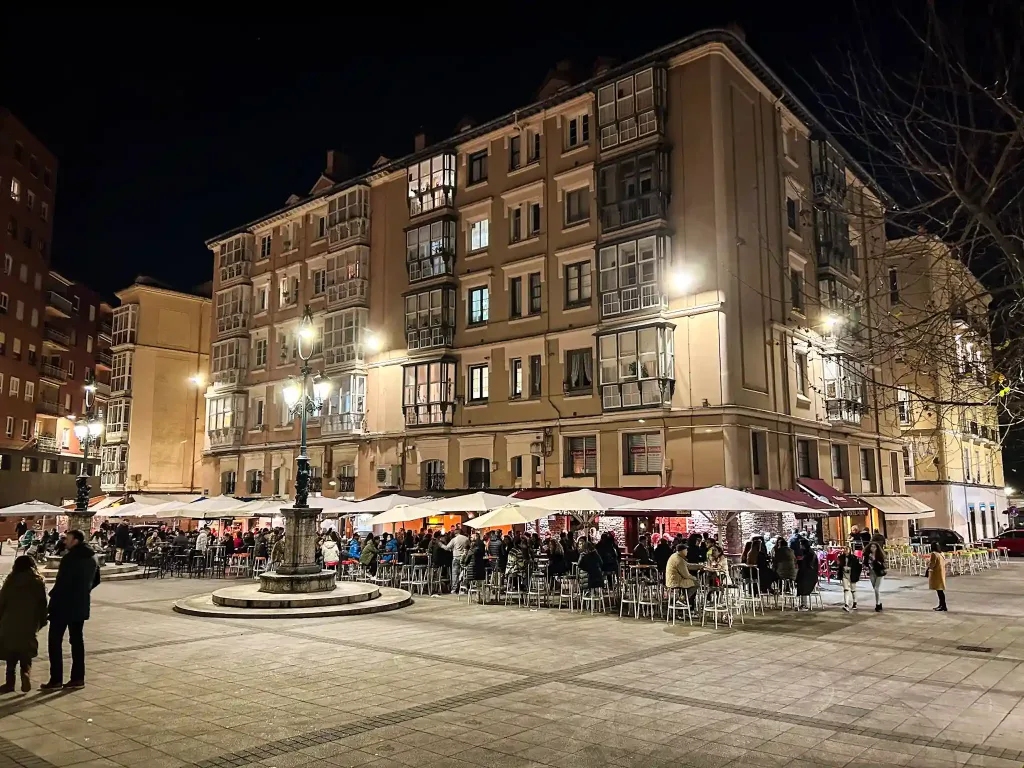
10. Museums Worth Visiting
If you have extra time, make sure to visit one (or both) of the city’s main museums. The Museum of Prehistory and Archaeology of Cantabria displays incredible artifacts from prehistoric cave sites, while the Maritime Museum of the Cantabrian Sea will delight visitors of all ages with its aquarium and marine exhibits.
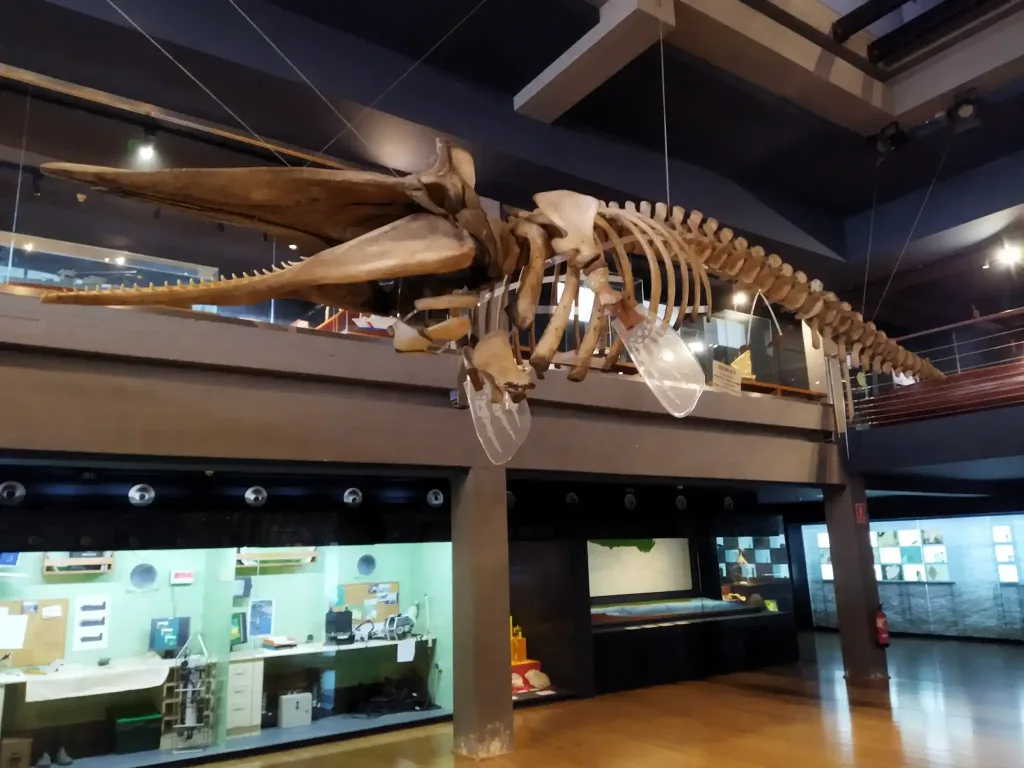
Where to Eat Gluten-Free in Santander
As you explore Santander, you’ll find plenty of restaurants offering gluten-free options — from seaside cafés in El Sardinero to cozy spots in the Old Town. Enjoy traditional Cantabrian dishes like rabas (fried squid), fresh fish, or quesada pasiega without worries, as many places are familiar with celiac-safe cooking.
Also Read: Sabores sin gluten: las cafeterías de Santander con más encanto
Also Read: Dónde comer sin gluten en Santander
Santander offers a wide range of tourist services, especially during the summer season, such as free walking tours to explore the city’s Cultural Ring, or the City Sightseeing bus, which allows you to visit the most emblematic places throughout the day.

Glutendtrotter Tip
Santander is best enjoyed on foot. Although it offers tourist services such as the free walking tours of the Cultural Ring or the City Sightseeing bus, we recommend exploring it at your own pace,taking your time to soak up its authentic maritime spirit.
Santander is a city best discovered slowly — by enjoying its bay, its viewpoints, and that timeless elegance that makes it unique in northern Spain. Dedicating the first day of your itinerary to the capital is the perfect way to start feeling the true essence of this land: the sea, the mountains, and the good life.
After this walk through Cantabria’s capital, you’ll be ready to continue your 3-day Cantabria itinerary and keep exploring the region’s authentic charm — picturesque villages, rolling green valleys, and the unspoiled nature that makes this corner of northern Spain so unforgettable.
More posts about Santander you may enjoy:
- ¿Viajas a Santander con niños? Lugares que debes visitar
- Top 10 Things To Do in Santander Spain: A One-Day Itinerary
Santander Map
Day 2: Santillana del Mar — A Journey Through Time
t’s not easy to decide what to see in Cantabria in just three days, as every corner of this land feels endless in beauty and charm. But if there’s one place that perfectly captures the region’s essence — its history, art, and rural soul — it’s Santillana del Mar, one of Spain’s most beautiful villages and an unmissable stop on your 3-day Cantabria itinerary.
With cobbled streets, noble stone houses and an atmosphere that feels frozen in medieval times, Santillana del Mar was declared a Historic-Artistic Site back in 1886. And despite what its name suggests — neither holy (santa), nor flat (llana), nor by the sea (mar) — its beauty is truly incomparable. Put on comfortable shoes and get ready to wander through centuries of history and tradition.
We recommend joining a private tour to discover the fascinating stories and hidden corners of this medieval gem with the help of an expert local guide.
How to Get to Santillana del Mar
The best way to reach Santillana del Mar is by car — either your own or a rental — so you can move freely and make the most of your day. If you’re traveling by public transport, take a train from Santander to Torrelavega, and from there, a bus to Santillana del Mar. However, bus connections are not very frequent, so driving remains the most practical option.
If you prefer not to drive, you can also book this day trip from Santander, which includes a visit to the Neocave of Altamira, a fascinating replica of one of Europe’s most important prehistoric sites.
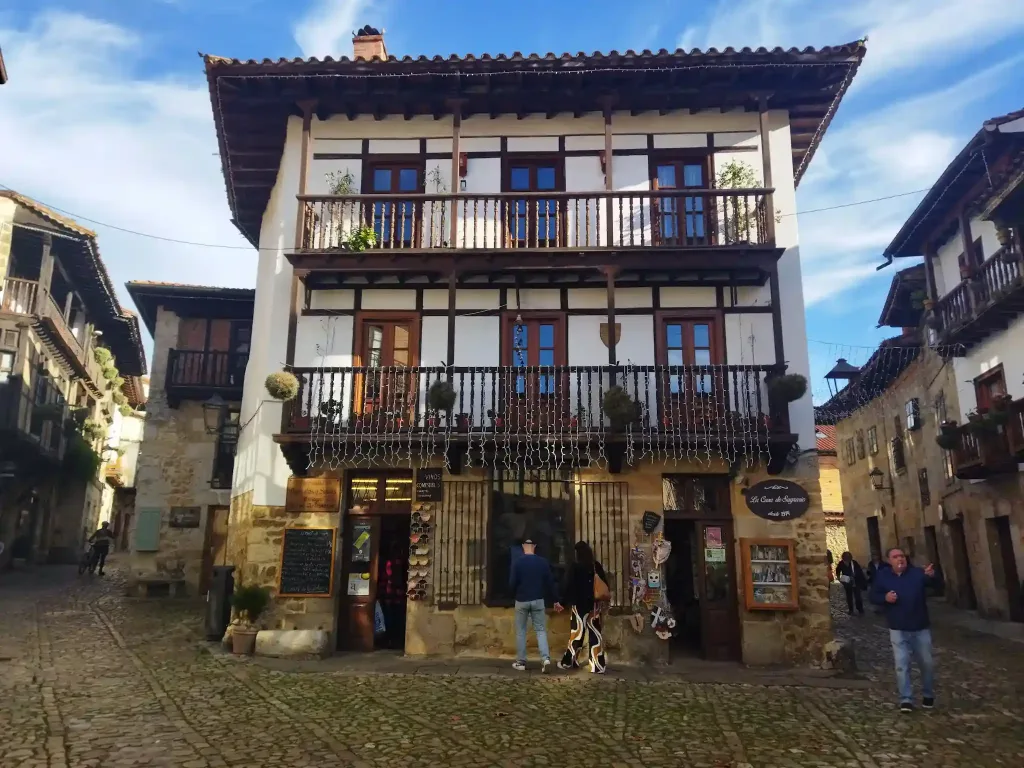
1. Regina Coeli Diocesan Museum: Sacred Art and History
Located in a former Dominican convent from the 17th century, the Regina Coeli Diocesan Museum houses more than 800 religious pieces, many of which were removed after the Second Vatican Council. It’s an essential stop for anyone interested in sacred art, local history and architecture.
2. The Historic Center: A Walk Through the Middle Ages
Strolling through the historic center of Santillana del Mar feels like stepping back in time. Traditional mountain houses with wooden balconies and noble coats of arms line its narrow cobbled streets. Don’t miss the Peredo-Barreda Palace, now transformed into a vibrant cultural space.
3. Plaza Abad Francisco Navarro and the Local Museums
Around the church, in the Plaza Abad Francisco Navarro, you’ll find some of the town’s most charming spots. Visit the Barquillero Museum, which tells the sweet history of Spain’s famous wafer sellers, and the Jesús Otero Museum, dedicated to the local sculptor whose works are scattered throughout Cantabria..
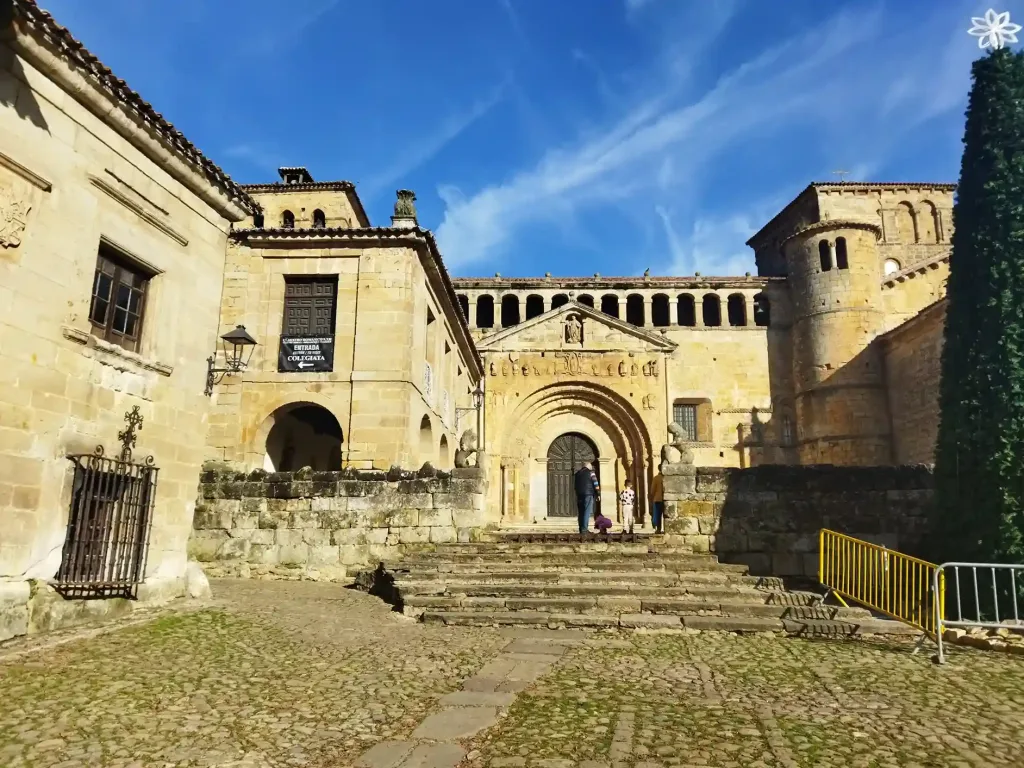
4. Colegiata de Santa Juliana: The Heart of Santillana del Mar
At the heart of the village stands the Collegiate Church of Santa Juliana, a true masterpiece of Romanesque architecture and the town’s main symbol. Its cloister is an artistic treasure, featuring beautifully carved capitals that tell biblical stories, while inside rests the relics of Saint Juliana, the patron saint of the village.
5. Velarde Palace and Plaza Mayor de Ramón Pelayo
In the Plaza de las Arenas you’ll come across the elegant Velarde Palace, a fine example of Renaissance architecture. A short walk away, the Plaza Mayor de Ramón Pelayo brings together different architectural styles — from medieval to baroque — with highlights like the Casa de la Parra and the Torre del Merino.
6. The Museum of Torture: A Glimpse into the Dark Past
One of the most visited museums in Santillana is the Museum of Torture, displaying instruments of punishment and capital sentences from the Middle Ages to the 19th century. It’s a thought-provoking visit that sheds light on one of history’s darkest chapters.
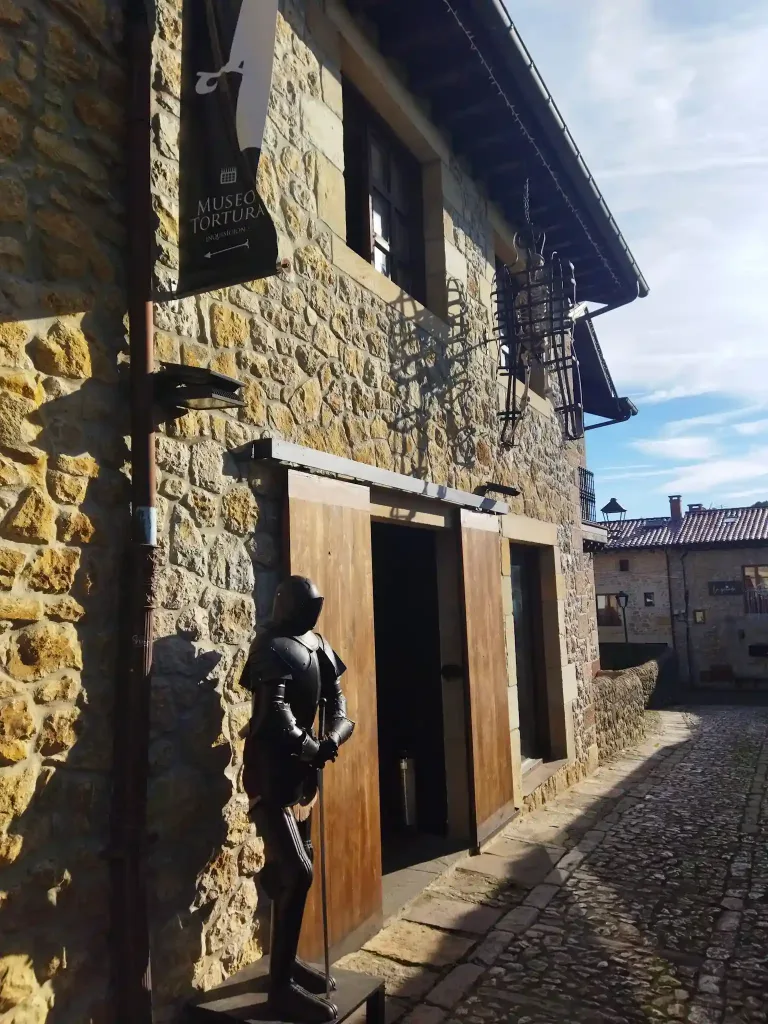
7. Convent of San Ildefonso: Sweet Traditions
Near the Diocesan Museum stands the Convent of San Ildefonso, where the cloistered Clarisse nuns prepare traditional handmade sweets.
8. Altamira Cave: The Sistine Chapel of Prehistory
Just three kilometers from the village lies the Altamira Neocave, an exact replica of one of Europe’s most important prehistoric caves. The original, from the Upper Paleolithic period, is closed to protect its fragile paintings, but the replica and its adjacent museum offer an extraordinary experience that brings ancient art to life.
📍 Book this guided tour of the Neocave to uncover the secrets of one of Europe’s most important prehistoric caves.
9. Santa Justa Beach: Santillana’s Hidden Seaside Secret
Despite the old saying that Santillana has “no sea,” the nearby Santa Justa Beach proves otherwise. Hidden among cliffs and just a short drive from the village, it’s one of Cantabria’s best-kept secrets — a peaceful corner where you can enjoy the sea breeze and stunning coastal views.
Where to Eat Gluten-Free in Santillana del Mar
Santillana del Mar offers excellent options for travelers with celiac disease or those following a gluten-free diet. Restaurants like La Villa serve traditional Cantabrian dishes adapted to be completely safe and gluten-free.
And don’t leave without stopping by Confitería Las Quintas, where you can taste delicious gluten-free sobaos and quesadas, handmade with care and the authentic flavor of Cantabria.
Also Read: Dónde comer sin gluten en Cantabria
After this walk through Santillana del Mar, you’ll understand why it’s one of the most visited villages in northern Spain. Its blend of art, history and authenticity makes it an essential stop on any 3-day Cantabria itinerary.
Tomorrow, your journey continues by the sea — in one of the region’s most popular coastal towns, especially loved by summer visitors.
More posts you may enjoy:
- Santillana del Mar Spain: Complete Travel Guide and Best Things to See
- Laberinto de Villapresente: diversión para toda la familia
- Qué ver en Comillas: 10 imprescindibles
Santillana del Mar Map
Day 3: Laredo — Seaside Spirit and Endless Beaches
To wrap up your 3-day Cantabria itinerary, we suggest a change of scenery — from the medieval charm of Santillana del Mar to the Atlantic breeze of Laredo, one of Cantabria’s four coastal gems along with Santander, Castro Urdiales and San Vicente de la Barquera.
The name Laredo comes from glaretum, meaning “sandy place,” and nothing could describe it better. Here, the sea and sand take center stage — from the tranquil Regatón Beach, hidden among marshlands, to the vast La Salvé Beach, stretching for more than four kilometers of golden dunes. Laredo blends history, fishing tradition and modern life in an incomparable natural setting.
1. The Old Town and El Arrabal: The Medieval Soul of Laredo
Declared a Historic-Artistic Site in 1970, these neighborhoods preserve the essence of the original town. Their cobbled streets wind between stately houses from the 16th to 18th centuries, such as the Casa de la Familia Mar and the Casa de la Marquesa de Arcentales. Walking through them feels like stepping back into the town’s proud seafaring past.

2. Medieval Wall: Echoes of a Defensive Past
In the Old Quarter, you can still find remnants of the 13th-century medieval wall, along with several of its twelve original gates — San Martín, San Marcial, San Lorenzo, and the West Gate leading toward Santa María. These ancient structures remind visitors of Laredo’s strategic importance during the Middle Ages.
3. Church of Santa María de la Asunción: A Gothic Treasure in Cantabria
Dedicated to the town’s patron saint, the Church of Santa María de la Asunción has been a National Monument since 1931 and is one of the finest examples of Gothic architecture in northern Spain. Inside, you’ll find remarkable treasures such as the 15th-century altarpiece of the Virgin of Bethlehem, a masterpiece of Flemish art, and a beautifully carved baptismal font.
The church’s five naves reflect different artistic periods, offering visitors a fascinating journey through centuries of religious art and history.
4. The Ensanche and the Ports: Modern Life by the Sea
The Ensanche district is the most vibrant part of Laredo, filled with shops, lively terraces and the Carlos V Square, a popular meeting point for locals and visitors alike.
Just a short walk away, you’ll reach the town’s two ports:
- The Fishing Port, where boats still set sail in search of the Cantabrian Sea’s treasures.
- And the Marina, with more than 800 moorings and a lively nautical atmosphere — the perfect place to watch the sunset over the bay.a de los tesoros del Cantábrico.
5. La Salvé Beach: Laredo’s Golden Gem
Stretching for over four kilometers of fine golden sand, La Salvé Beach is one of the longest and most spectacular beaches in northern Spain. Awarded the prestigious “Q” for Tourist Quality, it’s ideal for a sunny day by the sea, enjoying water sports, or simply taking a peaceful stroll along the shore.

6. Yacht Club and Sea Activities
Located in the Puntal area, the Laredo Yacht Club is the heart of the town’s maritime life and the venue for major sailing competitions throughout the year.
Beyond the club, Laredo offers countless ways to enjoy the sea: diving, snorkeling, paddle surfing, water skiing, sailing, or simply joining a boat tour across the Bay of Santoña to watch the sun set over the Cantabrian horizon — a truly unforgettable experience.
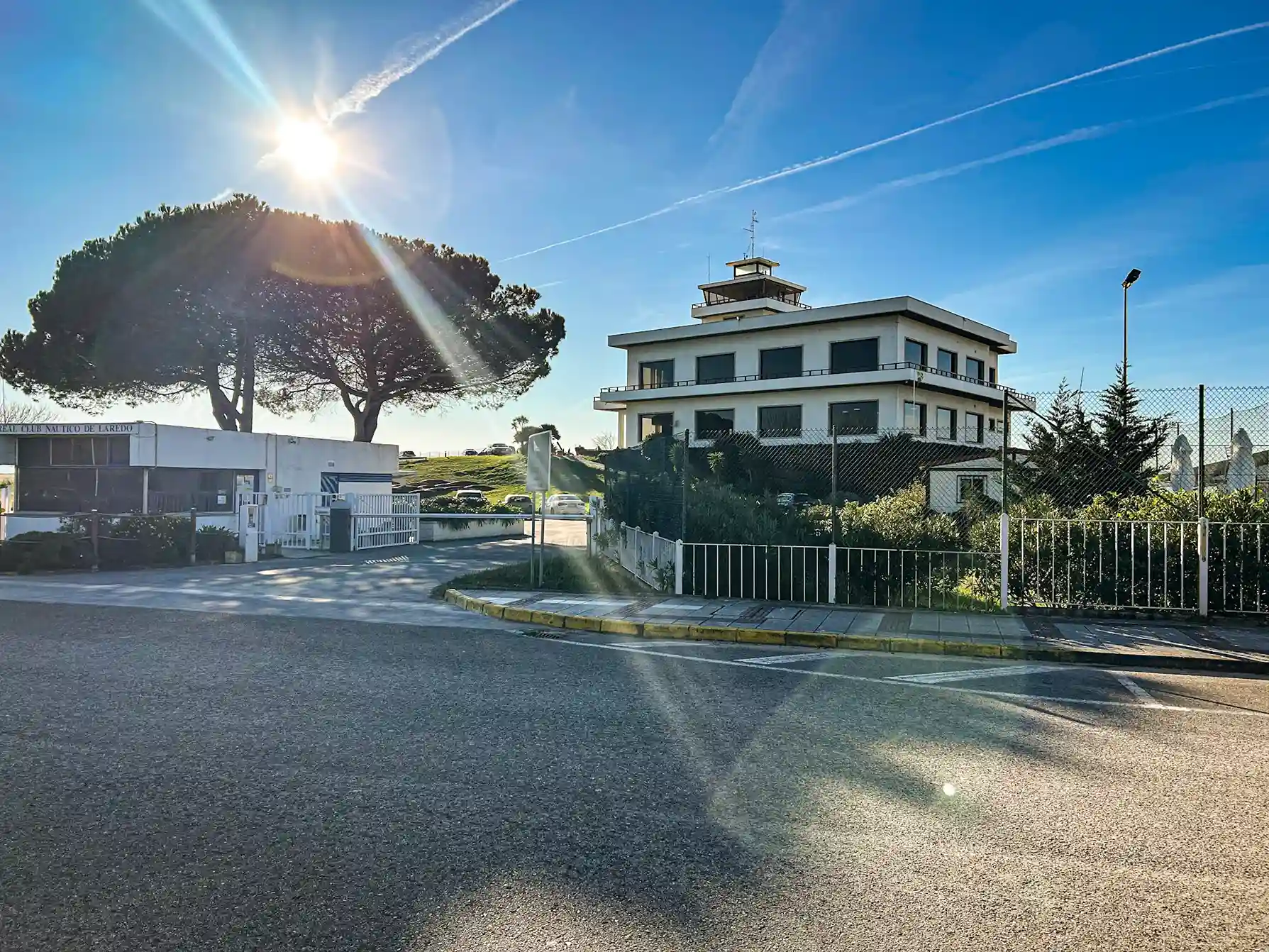
7. Boat Trip: An Unforgettable Sunset at Sea
A boat trip across the Bay of Santoña is an unforgettable way to experience the Cantabrian coast — especially at sunset, when the sea turns golden and the cliffs glow in the fading light.
If you’re looking to add a touch of adventure to your journey, Laredo is the perfect place. You can dive or snorkel in crystal-clear waters, rent a canoe, go water skiing, try kite surfing, sailing, or even catch some waves along its beaches.
📍 We especially recommend this boat tour to the Faro del Caballo in Santoña — it’s absolutely worth it for the breathtaking views and the sense of freedom you’ll feel at sea.
Also Read: Ruta de los faros de Cantabria
8. La Atalaya Viewpoint: The Best Panoramic View of the Town
Just a 20-minute walk from the Old Quarter, the La Atalaya Viewpoint offers a stunning 360º panorama of Laredo — the bay, the marina, La Salvé Beach, and the historic center spread out below your feet. It’s the perfect spot to say goodbye to the town with an unforgettable photo.
9. Laredo’s Festivals: Tradition and Color
f you visit Laredo in summer, you’ll have the chance to experience two of its most iconic celebrations:
- The Battle of Flowers (August): a dazzling explosion of color, declared a Festival of National Tourist Interest, where floats entirely covered with natural flowers parade through the streets in a spectacular display.
- The Landing of Charles V (September): a historical reenactment of the emperor’s arrival in the town, complete with period costumes, lively markets, and festive atmosphere in every corner.
Where to Eat Gluten-Free in Laredo
To finish your visit, treat yourself to the local gastronomy at restaurants like El Faro, La Parra Bistró, or Casa Silvino, where you’ll find gluten-free options and warm, attentive service.
Although these restaurants are not part of the Celiac Association of Cantabria, many are familiar with gluten-free cooking and take great care in preparing safe and delicious dishes.
More posts you may enjoy:
Laredo Map
And so, dear Glutendtrotters, we come to the end of this journey through Cantabria — a land of infinite landscapes, deep history and genuine emotion. From the maritime elegance of Santander, through the medieval charm of Santillana del Mar, to the golden beaches and Atlantic spirit of Laredo, this route is the perfect way to discover the best of Cantabria in a 3-day Cantabria itinerary.
Each stop reveals a piece of the region’s soul — wild nature, living traditions, and a gastronomy that wins over every traveler. And the best part? Here, gluten-free travelers will always find a place at the table, with safe and delicious options in every corner.
So don’t wait any longer — pack your bags, follow this guide, and let yourself be carried away by the calm rhythm of a region that captivates without pretension. Cantabria awaits you with open arms and countless unforgettable experiences.
And of course, when you return, share your stories with the Glutendtrotter community. We love reading about your adventures and discovering, together, new places where travel — and gluten-free living — are enjoyed to the fullest.
More posts you may enjoy:
- Cantabria en 5 días
- Qué ver en Cantabria en 7 días
- Qué ver en Cantabria: 20 planes perfectos
- Cantabria y Gastronomía: recorrido por los mejores platos y productos
- 10 consejos esenciales para viajar a Cantabria
FAQs
In three days, you can discover some of Cantabria’s most iconic places: Santander with its beautiful bay and the Magdalena Palace, Santillana del Mar with its medieval charm and the Altamira Cave, and Laredo with its endless beaches and seafaring atmosphere. It’s the perfect itinerary to combine nature, culture and Cantabrian gastronomy.
The best time to visit Cantabria is between May and September, when the weather is warmer and the days are longer. In summer, you can enjoy the beaches and events such as the Battle of Flowers in Laredo, although spring and autumn also offer lush landscapes and fewer crowds.
Santander is an ideal base to explore Cantabria in 3 days, as it is well connected and offers plenty of accommodation options. You can also spend one night inland, for example in Santillana del Mar or in one of the Pasiego Valleys villages, to enjoy the rural atmosphere.
Some traditional dishes you shouldn’t miss include cocido montañés (mountain stew), rabas (fried squid), merluza a la cazuela (hake casserole), Cantabrian cheeses, and local desserts like sobaos and quesadas. Many restaurants also offer gluten-free options so everyone can enjoy Cantabria’s cuisine safely.
Yes, although having a car makes getting around easier, it’s possible to explore Cantabria using public transport. Trains and buses connect Santander with towns such as Torrelavega, Santillana del Mar and Laredo, and there are also organized excursions that let you visit the main tourist sites without driving.
